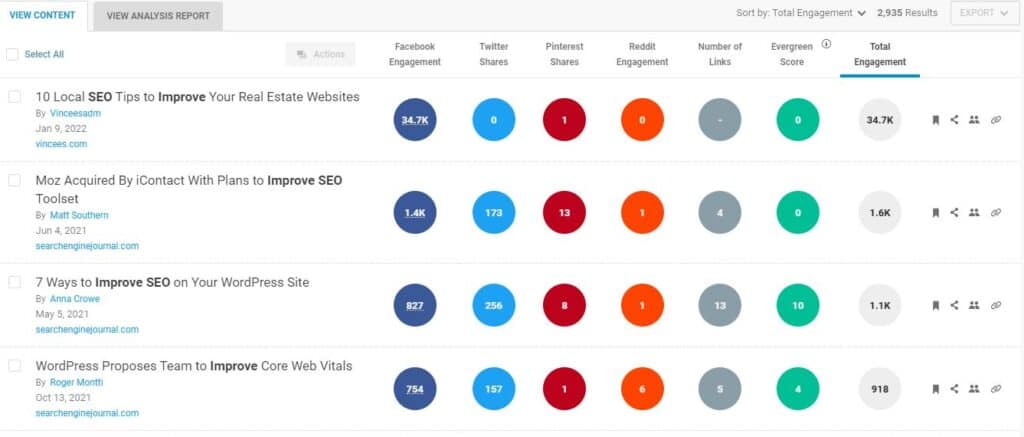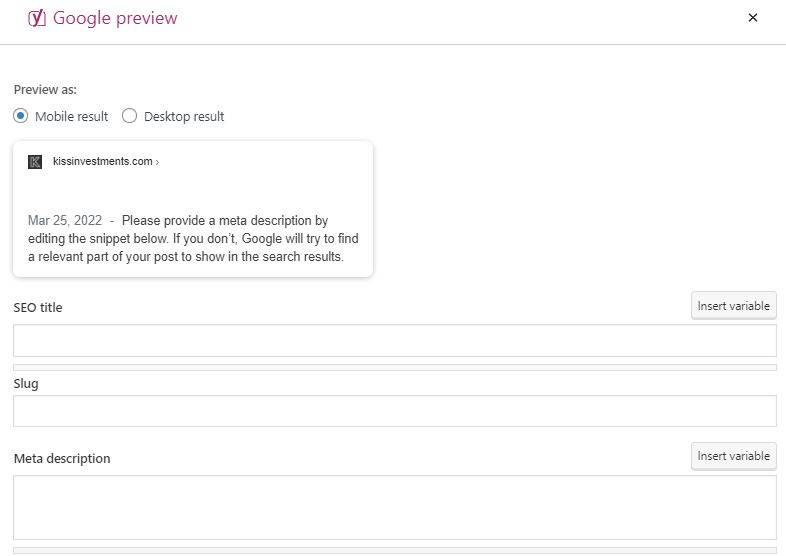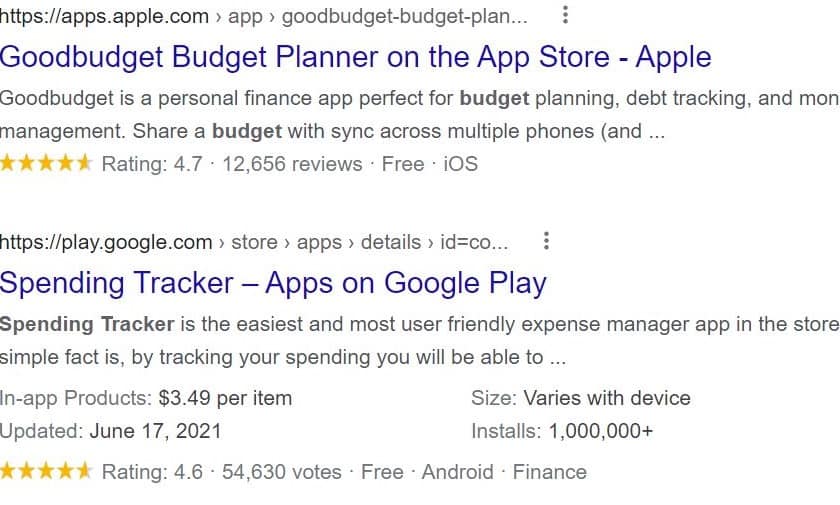For this article, I’ve compiled a list of the best practices for SEO to increase traffic to websites.
Did you know that 68% of online experiences begin with a search engine? When anyone conducts a search, what happens next?
On Google, the first page results have a 71.33% probability of being clicked.
That means if you’re not on the first page, you’ve just lost a substantial amount of potential traffic.
What’s even more interesting is that pages two and three only get 5.59% of the clicks.
You can do a few things to improve your odds of being ranked higher in Google searches.
18 Best Practices For SEO In 2026
1. Have More Than Just Text
Your website’s content should not be limited to written words.
Pictures are fine, but there’s more you can do to boost your SEO score, as I mentioned earlier.
Consider including other multimedia features on your site, such as audio, slideshows, or videos.
All of these will contribute to a better user experience.
What is the reason for this?
Consumers, for instance, are interested in seeing more videos.
It’s much more convenient to watch something than it is to read about it.
However, there is a direct link between your website’s SEO rating and videos or other multimedia sources.
These features will increase the amount of time people spend on your website significantly.
People could spend several minutes on your page depending on the length of your videos.
When this happens, your search ranking will undoubtedly improve.
2. Use Header Tags To Break Up Your Content
Another way to enhance the user experience on your website is to use headings.
They divide the material into smaller chunks, making it easier to read or glance through.
Additionally, headers make the content seem more appealing, which is always a plus.
People would be discouraged from spending a long time on your website if it is just full of text.
Your SEO rating will suffer as a result.
If you’re using WordPress for your website, changing the header tags is easy.
For blogs and websites, I use header tags.
I strongly advise you to start following this practice right away if you aren’t already doing it.
3. Your Page Should Be Properly Formatted
When it comes to designing a website layout, take your time.
One of the best practices of SEO is to keep it clean, simple, well-organized, and clutter-free.
Take into account details like typography and font size.
Use italics, bold font, and colored text sparingly.
With checklist and bullet points, you can make it simple for readers to browse through your material.
Take a look at this Shopify example:

It’s clear and appealing.
They have a basic image and a good amount of text.
The text is formatted in such a way that it is easy to read, particularly with the bolded points.
Shopify also uses various header tags and subheadings on its website.
Your website can turn off people if it is cluttered with too many images, colors, advertisements, and blocks of text.
This includes the website’s design and navigation.
Your SEO ranking will increase if you use a clear design and format.
4. Make Your Page Load Faster
For multiple reasons, the speed at which your page loads is critical.
First and foremost, if your page loading speed is too slow, Google will notice this and penalize you.
A slow-loading website also has an effect on how your visitors interact with your pages.
As a result, the ranking will suffer due to negative experiences.
The bounce rates increase when pages take a long time to load.
Is there such a thing as too slow?
According to studies, 38% of visitors will leave a website if it takes more than 3 seconds to load.
Perhaps more astonishing is the fact that the majority of those users will never return to the website.
This is detrimental to your search engine optimization ranking because it reduces traffic to your website.
On the other hand, if your page loads quickly, visitors will return.
The success of your website will be recognized by Google’s algorithm, which will change your search ranking accordingly.
As a result, optimizing both the page speed and server response time is the best SEO practice.
There are free online services available to measure the speed of your website, such as PageSpeed Insights.
This will allow you to test your website from various locations around the globe.
If your website is running slowly, you can look at your theme and plugins.
If your slow server is the issue, take a look at my list of the best web hosting companies and switch!
5. Image Optimization
Images and other types of media are excellent additions to your website.
However, if you want these images to boost your SEO score, you must ensure that they are properly optimized.
I’m talking about things like size and file format.
Large images will cause your page to load slowly, which, as I previously stated, affects your ranking.
One of the best practices for SEO is to optimize your files by resizing or compressing them.
By naming the pictures appropriately, you can also use them to add your keywords.
Take, for example, a website that sells golfing and other sports equipment.
Rather than calling a picture “golf club1,” you might call it “best golf club for slow swing speed.”
You can also use keywords strategically in the title of your picture, as well as in the description or caption.
6. Add Outbound And Internal Links
There are a few items you can do to boost your website’s reputation.
Sure, you can make statements, but it is more trustworthy if you can back them up with proof.
All of the data statements should be backed up by credible and reliable sources.
I do this myself, as you may have noticed from what you’ve read so far.
But here’s another example from a blog post I wrote about designing an email newsletter that highlights what I’m talking about:
All of the facts are taken from reliable sources.
I have made sure to include outbound links to those pages.
Not only should you link to authoritative pages, but the best SEO practice is to make sure that most of the information is recent.
It’s worth looking at the links I’ve used in some of the preceding examples.
Outbound links to content that are too old won’t be as relevant and will have a lower effect on the SEO ranking.
Internal links should also be included.
Visitors will be guided to other pages on your website via these links.
In this section, I used this technique to link to the article about designing a newsletter.
You’ll be redirected to the KISS Investments blog post if you scroll back up and click on the hyperlink.
7. Use BuzzSumo For Link Building Options
You may use BuzzSumo for finding link-building opportunities.
Simply type in your search term and a list of results will appear.
Here’s what I get when I search for “improve SEO”:

Then, on any post that is of interest, click on “View Top Sharers.”
Following that, you’ll see a list of people who have shared that post.
These are all people with whom you should consider developing relationships, which could lead to opportunities for link-building and guest blogging.
8. Check If Your Website Is Readable
When writing content for your website, keep your audience in mind.
If you want people to come to your site and spend time on it, talk in simple terms.
Don’t make it come across as a research paper or legal document.
The best SEO practice is to do content writing in a manner that is understandable to most of your target audience.
Are you wondering if your content is readable?
There are online services to test your website.
The Yoast WordPress plugin’s readability analysis is one of my favorites.
This type of tool can assist you in identifying terms that are too long or complex for people to understand.
9. Make Your Website Mobile-Friendly
Mobile use is on the rise, as I’m sure you’re aware.
It’s growing so quickly that it’s already surpassed laptops and desktops.
Mobile devices account for more than 60% of all Google searches.
Google, of course, acknowledges this trend and factors this into the ranking of the websites.
Mobile users must be able to access your website easily.
These users cannot be ignored.
If your website isn’t optimized for mobile devices, the user experience will suffer, and your ranking will be affected as a result.
10. Apply Keywords
Consider the various elements of the Google search algorithm.
The algorithm considers keywords as a major factor.
The best SEO practice is to include terms that people search for throughout your content.
However, use it sparingly.
If you overuse them by keyword stuffing your website, Google will notice, and your ranking will suffer as a result.
Keywords can be included in sentences in a normal manner.
Use them in your header tags and even the captions of your images.
Pay attention to long-tail keywords, which are 3 or 4-word phrases that are used in a search.
For instance, when looking to open up a bank account, someone is unlikely to just search for the word “bank”.
They might, however, type in “best online banking for businesses” into the search engine.
Your website would have a better chance of ranking higher if your keywords match their search intent.
11. Create A Compelling Meta Description
The meta description is another aspect you need to work on.
The tag appears as follows in the source code:
<META NAME=“Description” CONTENT=“Your Meta Description”>
if you use an SEO plugin in WordPress like Yoast, you get the option to enter it from your blog editor:

Google has made this simple by providing instructions on how to write effective descriptions. The important ones are as follows:
- Include relevant information – Use keywords that are applicable to the article earlier. If you are unsure, try asking the 5Ws (Who, What, When, Where, and Why). Journalists use this formula for reporting. It’s also useful for writing meta descriptions.
- Create unique descriptions – Each description should be different from the ones on the other pages.
- Keep them brief – Google only allows meta descriptions of 160 characters or less.
Although the meta description isn’t as significant as the heading in terms of generating clicks as people don’t pay as much attention to it, it is still important from an SEO ranking standpoint. So don’t overlook it!
12. Check For Broken Links
You shouldn’t have to worry about the links breaking if you use authoritative websites for hyperlinks.
However, it is still possible to end up with some.
Your SEO ranking can be lowered by broken links.
Furthermore, it does not look professional if a link leads your visitors to an invalid destination.
You can scan for broken links on your WordPress website with SEO plugins like Broken Link Checker.
This can be used to test the entire website or individual pages.
You can get it reviewed automatically once you set it up.
If a link goes down, you’ll be notified as soon as possible so you can replace it.
You may also use this tool to keep track of other websites in your industry.
What does this mean for your SEO?
If a link on another website is broken, you can contact the webmaster of that page and request that the broken link be replaced with a link to your website.
Since you are doing them a favor by informing them of an issue with their website, they will be open to returning the favor.
This would be helpful to increase traffic to websites. Outbound links to your page from other websites can also help you with SEO.
13. URLs Have To Be Optimized And Focused
The title tag could use power words, but the URL does not have to. Let me explain this.
Look at this example from Noah Kagan:

Noah’s title tag is SEO and click-through-rate optimized. It’s optimized for SEO with the keywords “time management tips,” and it’s optimized for click rates with the power words “insanely busy” to evoke emotion.
At the same time, his URL does not contain the words “insanely busy”.
Since the article is trying to rank for “time management tips,” it doesn’t have to.
Also, note that the keywords are present at the beginning of the title for better on-page optimization and results.
14. Get A Variety Of Links
You can obtain a variety of links, including links from blog posts, homepage links, directory links, footer links, educational links, and so on.
SEO services have a tendency to create only one of these types of links rather than different types of them.
If you need to rank well, you can’t just depend on one type of link, such as directory links. Instead, one of the best practices of SEO is to get links to your site from blogs, directories, and, sometimes, other websites’ homepages.
Just make sure the links you’re creating are relevant since those are the ones that have the most effect.
With KISS Investments, for example, I have a number of sites linking to me.
Here are some examples of links to my site: a sidebar link from a well-known blog, a link inside a blog post, a link from an educational website, a news site link, etc.
About half of my monthly traffic from Google is attributed to the diversification of links coming into the website.
15. Using Latent Semantic Indexing (LSI)
While latent semantic indexing (LSI) is a powerful technique, it is not widely used. That’s a pity since LSI can help your site rank higher in search engines.
In addition to the main keywords, search engines use LSI to identify similar keywords. To put it another way, LSI looks for synonyms for keywords.
If you’re writing an article about Twitter, for example, you could use the LSI keyword “microblogging service.”
Let’s take a look at how LSI works in practice. One of the first pages that comes up when you Google “new pos system” is this article from TechRadar:

You will see right away that one of the post’s keywords is “best pos system“.
And, sure enough, the post appears on page 1 of Google searches for “best pos system”
This article exemplifies how LSI will help you boost your SEO ranking and increase traffic to websites. Try it out and see how powerful it can be.
16. Develop A Smartphone Application
For some of you, developing a mobile app could be an extensive undertaking, but it will improve your SEO.
Considering the expenses, it is also a worthwhile investment.
How does an app help you improve your Google SEO? With App Indexing, Google is indexing apps on the search.
When people search for keywords in your niche, they can come across your app, thereby helping in SEO.
For example, if you Google “budget tracker,” you’ll find an app on the first page:

When your app appears in a Google search, it immediately becomes a useful resource.
The key point here is that there are advantages to getting a high-ranking Google app. Yes, it can be expensive, but it is well worth it.
17. Remove Unnecessary Code
For developers, coding goes through various iterations. You can end up having too much that some of it become irrelevant.
If your site has too much code, it will take longer for search engines to crawl it, which is worse. The most common causes are on-page JavaScript and CSS.
One of the SEO best practices is to keep the code is as light as possible. This would also improve the speed at which your page loads and a faster load time equals better SEO.
18. Think Outside The Box
It’s relatively straightforward to get links in certain niches, such as marketing, food blogs, and entertainment.
Several websites would be willing to link to you if you present a compelling case.
However, in some niches, such opportunities just do not exist.
That’s when you’ll have to think outside the box.
Obtaining links from relevant niches is a powerful technique.
If you’re a landscaping contractor, for example, some of the niches include:
- Home improvement
- Do-it-yourself
- Beauty and life (e.g., the right way to prepare your garden for spring)
Consider any niche in which you can apply your knowledge.
Then all of the standard SEO strategies can be used: guest posting, forums, and so on.
Let’s look at an example.
Assume you work as an interior designer.
Home purchasing and ownership is a similar niche with a different demographic than traditional home decor enthusiasts.
You may discuss how home decor will increase the value of your home.
What do you think you could do with this?
You could create content for your own site and then request a link from real estate blogs. This is a common SEO strategy.
You might also use the concept for a guest post on a popular website.
It will not only rank for the keywords that you try to target (sending you constant traffic), but it will also give you a lot of immediate referral traffic from the place where it’s posted.
Begin by brainstorming as many similar niches as you can, then come up with as many ways to add value to those areas.
Final Thoughts
You don’t have to do them all at once.
Start with a few best practices for SEO and work your way up.
Keep track of your progress.
Validating your SEO plan by looking at your traffic and search ranking is a good idea.
You’ll be on the way to the top of Google’s search results in no time.
Who knows, maybe you’ll be able to take the number one spot on the search engine.




